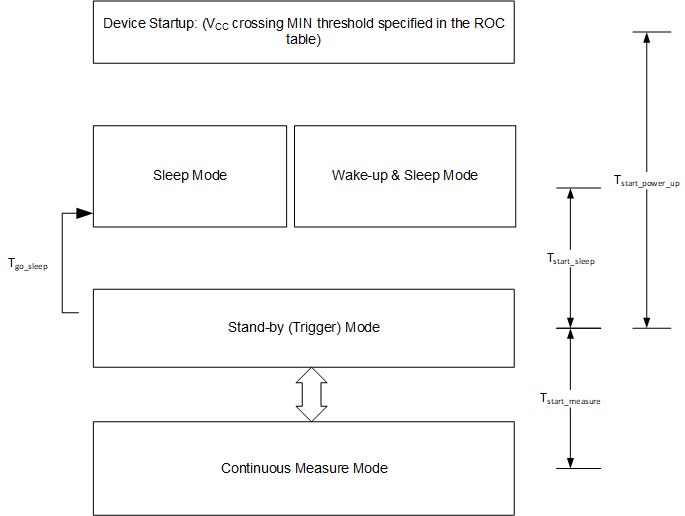SLYS045B June 2021 – July 2024 TMAG5273
PRODUCTION DATA
- 1
- 1 Features
- 2 Applications
- 3 Description
- 4 Pin Configuration and Functions
-
5 Specifications
- 5.1 Absolute Maximum Ratings
- 5.2 ESD Ratings
- 5.3 Recommended Operating Conditions
- 5.4 Thermal Information
- 5.5 Electrical Characteristics
- 5.6 Temperature Sensor
- 5.7 Magnetic Characteristics For A1, B1, C1, D1
- 5.8 Magnetic Characteristics For A2, B2, C2, D2
- 5.9 Magnetic Temp Compensation Characteristics
- 5.10 I2C Interface Timing
- 5.11 Power up & Conversion Time
- 5.12 Typical Characteristics
- 6 Detailed Description
-
7 Application and Implementation
- 7.1 Application Information
- 7.2 Typical Application
- 7.3 Best Design Practices
- 7.4 Power Supply Recommendations
- 7.5 Layout
- 8 Register Maps
- 9 Device and Documentation Support
- 10Revision History
- 11Mechanical, Packaging, and Orderable Information
Package Options
Refer to the PDF data sheet for device specific package drawings
Mechanical Data (Package|Pins)
- DBV|6
Thermal pad, mechanical data (Package|Pins)
Orderable Information
6.4.4 Continuous Measure Mode
In this mode the TMAG5273 continuously measures the sensor data per SENSOR_CONFIG & DEVICE_CONFIG register settings. In this mode the result registers can be accessed through the I2C lines. The time for the device to go from continuous measure mode to standby mode is listed as Tstart_measure in the Power up & Conversion Time table.
 Figure 6-6 TMAG5273 Power-Up
Sequence
Figure 6-6 TMAG5273 Power-Up
SequenceTable 6-5 shows different device operational modes of the TMAG5273.
Table 6-5 Operating Modes
| OPERATING MODE | DEVICE FUNCTION | ACCESS TO USER REGISTERS | RETAIN USER CONFIGURATION | COMMENT |
|---|---|---|---|---|
| Continuous Measure Mode | Continuously measuring x, y, z axis, or temperature data | Yes | Yes | |
| Standby Mode | Device is ready to accept I2C commands and start active conversion | Yes | Yes | |
| Wake-up and Sleep Mode | Wakes up at a certain interval to measure the x, y, z axis, or temperature data | No | Yes | 1ms, 5ms, 10ms, 15ms, 20ms, 30ms, 50ms, 100ms, 500ms, 1000ms, 2000ms, 5000ms, and 20000ms intervals supported. |
| Sleep Mode | Device retains key configuration settings, but does not retain the measurement data | No | Yes | The primary device can use sleep mode to implement other power saving intervals not supported by wake-up and sleep mode. |